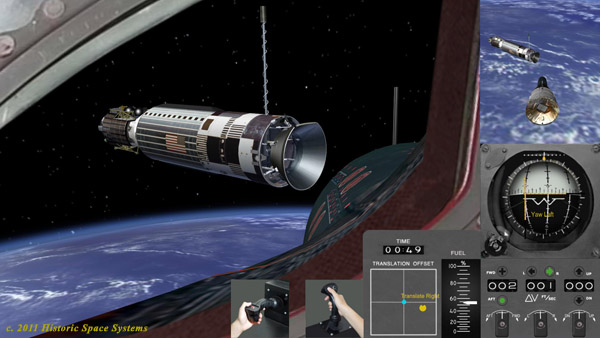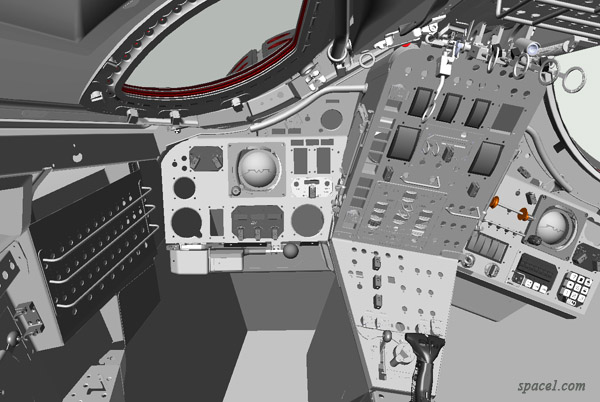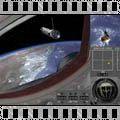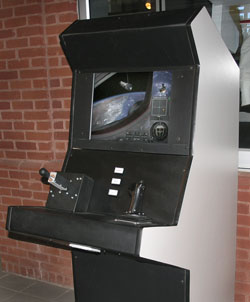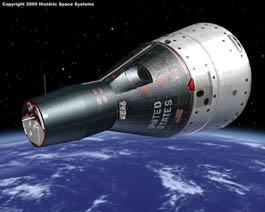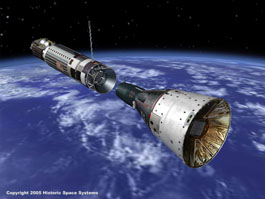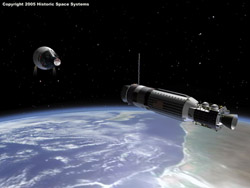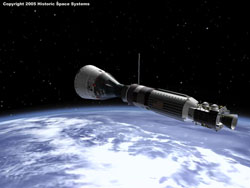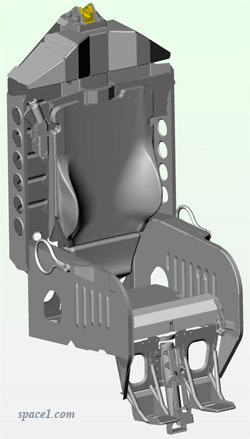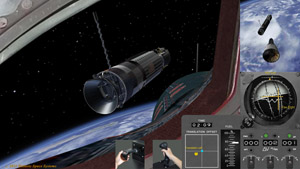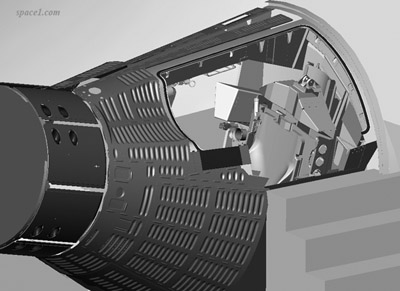|
Model Design
We created this simulation with the same approach, the same passion for realism and historical accuracy, as in our high fidelity exhibits. The simulation references over one hundred
McDonnell Aircraft engineering drawings of the Gemini spacecraft and Agena Target Docking Adapter, and photographs from NASA and our own archives, to accurately depict the in-flight appearance of these
spacecraft.
(Insulation strips sometimes seen trailing the adapter section of the
Gemini are not depicted in the simulation to reduce distractions and improve performance. Likewise, a static discharge ring attached to the Agena docking collar on early missions is not included.)
|

